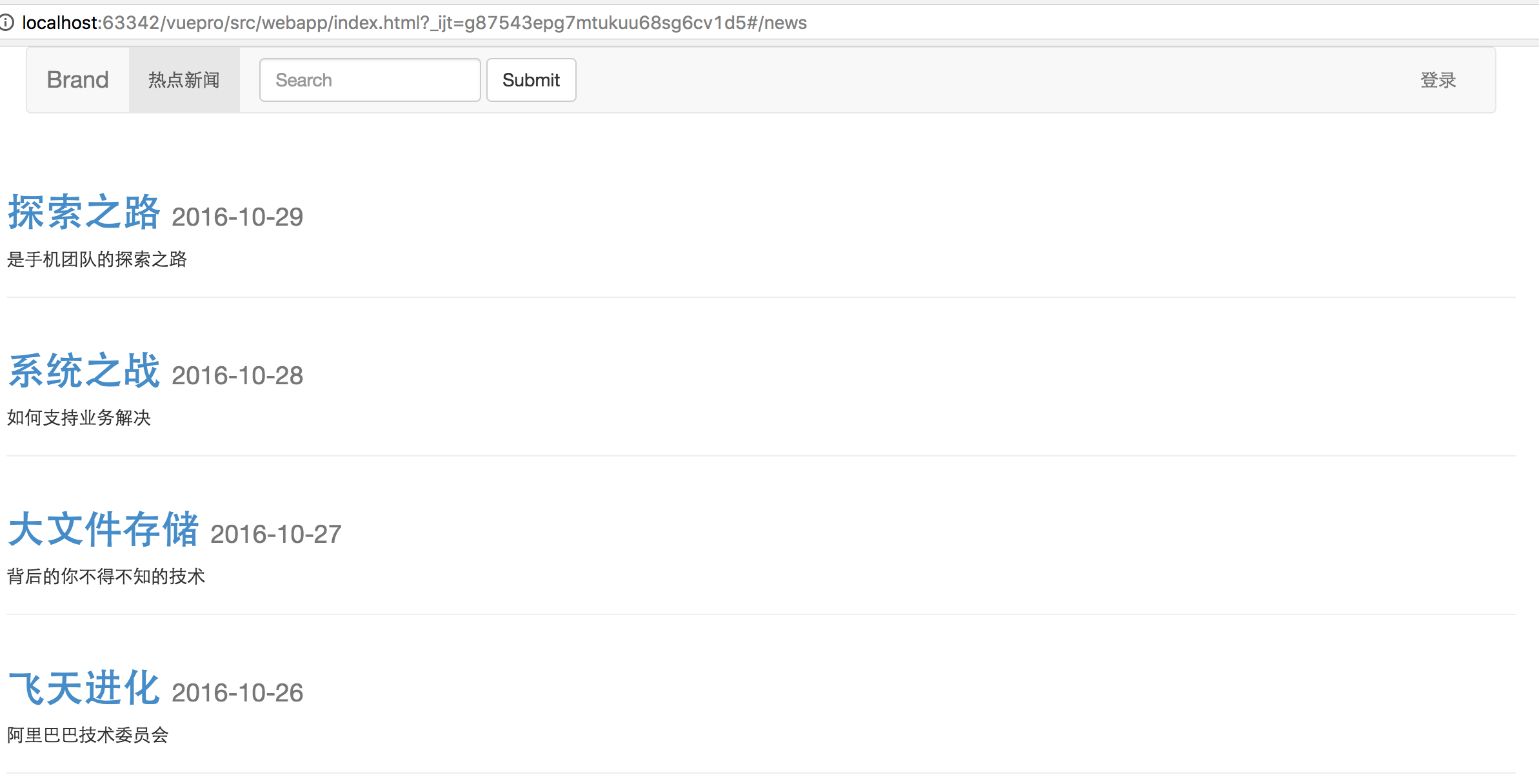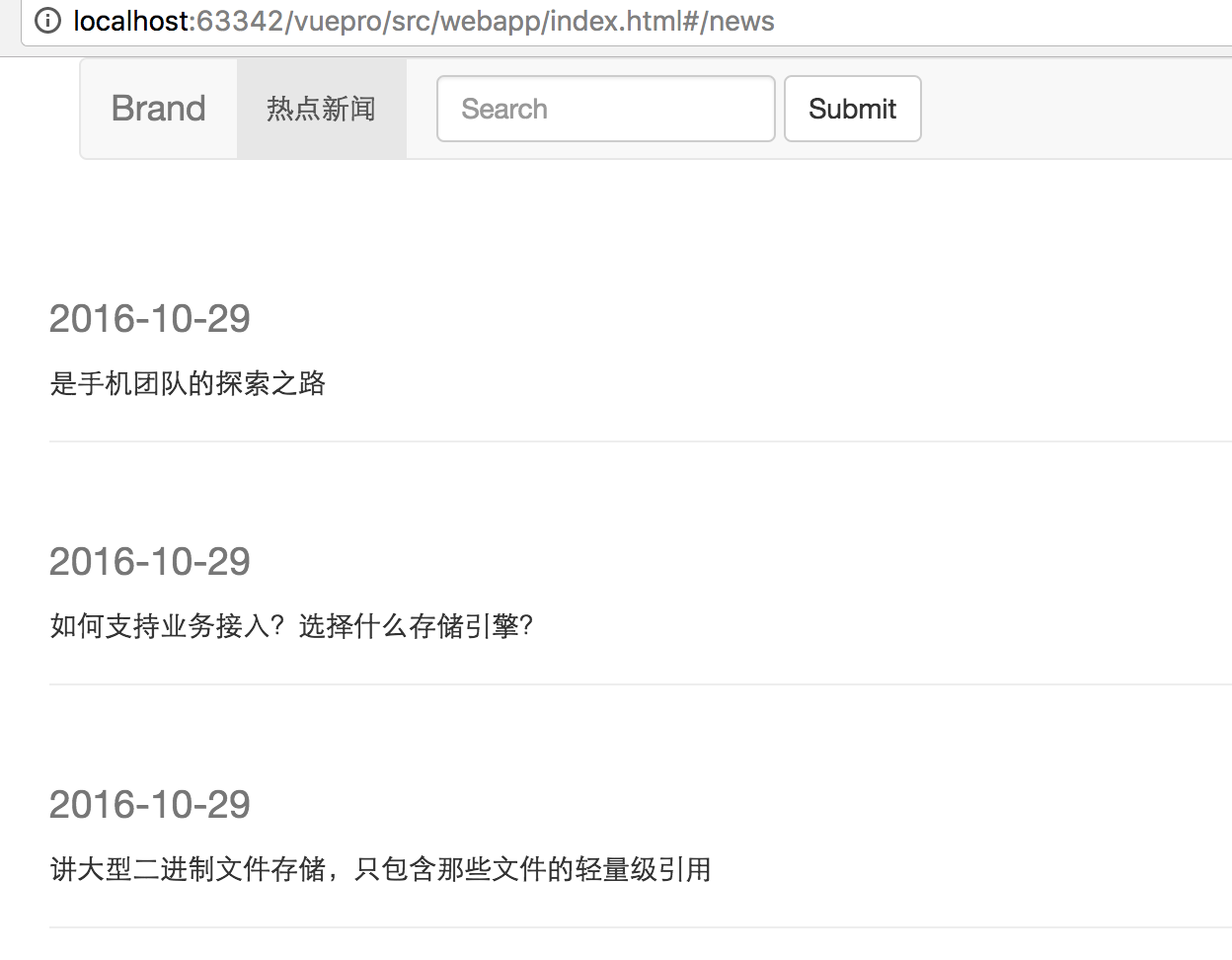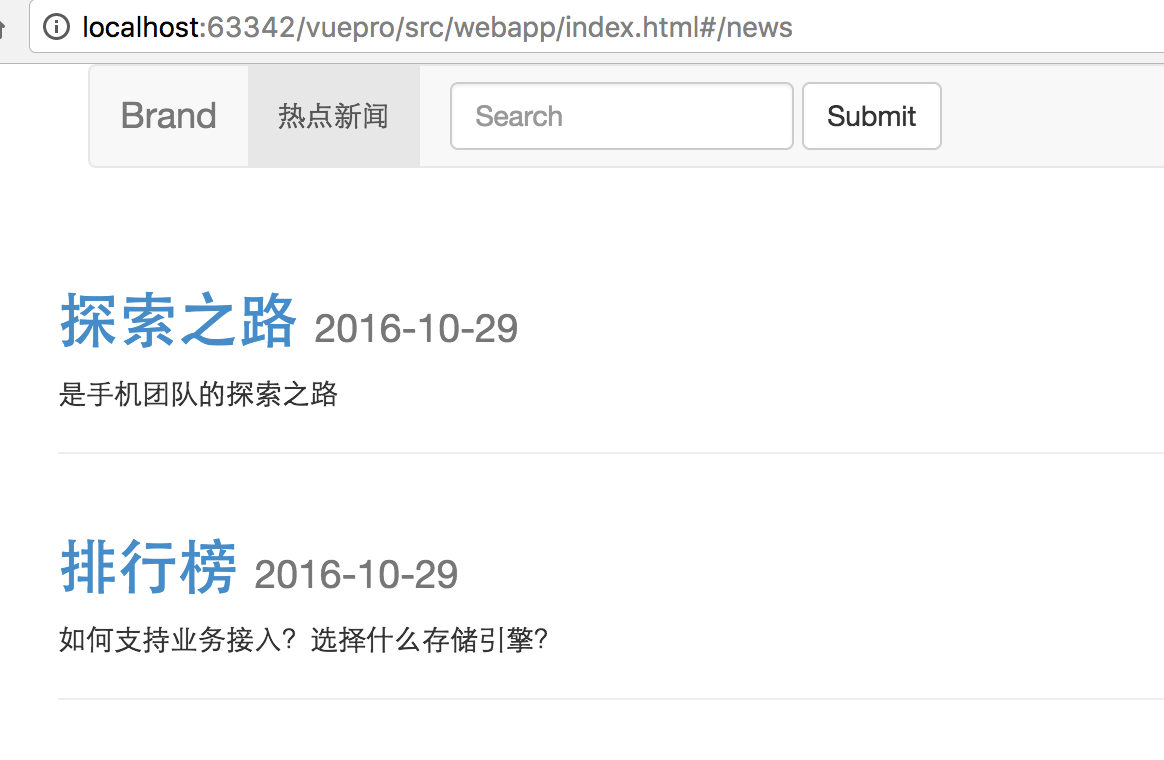回顾
以前我们在做这个新闻列表的时候,是一个写死的数据
export default{
data(){
return{
newslist:[
{newsid:"101",pubtime:"2016-10-29",title:"探索之路",desc:"是手机团队的探索之路"},
{newsid:"102",pubtime:"2016-10-28",title:"系统之战",desc:"如何支持业务解决"},
{newsid:"103",pubtime:"2016-10-27",title:"大文件存储",desc:"背后的你不得不知的技术"},
{newsid:"104",pubtime:"2016-10-26",title:"飞天进化",desc:"阿里巴巴技术委员会"},
]
}
},
}- 1
- 2
- 3
- 4
- 5
- 6
- 7
- 8
- 9
- 10
- 11
- 12
然后在模板上循环:
<div class="page-header" v-for="news in newslist">- 1
今天我们来学习从服务器获取数据
news-list.vue:
export default{
created(){
if (this.$store.state.newslist.length == 0){
// 请求服务器获取数据
this.$http.get("http://localhost/news.php").then(function (res) {
this.$store.state.newslist = res.body;
},function (res) {
// 请求失败处理
})
}
}
}- 1
- 2
- 3
- 4
- 5
- 6
- 7
- 8
- 9
- 10
- 11
- 12
组件生命周期(创建)里请求服务器获取数据,然后保存到了state 里:
this.$store.state.newslist = res.body;- 1
newslist 在实例化Vuex.Store 的时候定义,入口文件index.js里:
state:{
user_name:"",
newslist:[]
},- 1
- 2
- 3
- 4
组件模板上就要这样循环了:
v-for="news in this.$store.state.newslist"- 1
数据过滤
处理服务器返回来的数据,比如我们这里news.php 的返回的json数据:
[{"id":101,"pubtime":"2016-10-29","title":"探索之路","desc":"是手机团队的探索之路","isdeleted":false},{"id":102,"pubtime":"2016-10-29","title":"排行榜","desc":"如何支持业务接入?选择什么存储引擎?","isdeleted":false},{"id":103,"pubtime":"2016-10-29","title":"大文件存储","desc":"讲大型二进制文件存储,只包含那些文件的轻量级引用","isdeleted":true}]- 1
我们要根据isdeleted 做数据过滤,不多说,先看代码:
import Vuex from 'vuex';
Vue.use(Vuex);
const vuex_store = new Vuex.Store({
state:{
user_name:"",
newslist:[]
},
mutations:{
showUserName(state){
alert(state.user_name);
}
},
getters:{
getNews(state){
return state.newslist.filter(function (news) {
return !news.isdeleted;
})
}
}
})- 1
- 2
- 3
- 4
- 5
- 6
- 7
- 8
- 9
- 10
- 11
- 12
- 13
- 14
- 15
- 16
- 17
- 18
- 19
- 20
- 21
getters 专门写了一个方法,做了数据过滤处理,保留isdeleted为false 的记录。
那么我们在组件模板上循环的时候也要修改一下了:
v-for="news in this.$store.getters.getNews"- 1
过滤之后,只有2条数据了


